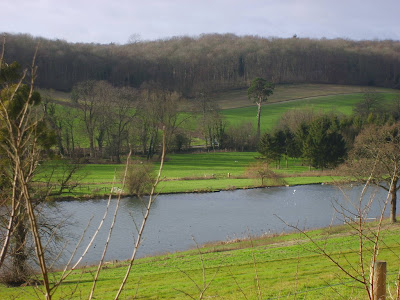

To document and record all species of animals and birds recorded in the Amersham District, including Little Chalfont, Amersham, Chesham, Chenies, Latimer, Hyde Heath, Chesham Bois, Old Amersham and Shardeloes Lake



Osprey 'Beatrice', trapped and satellite-marked in Moray (Roy Dennis)
Beatrice's Details: Is a neighbour of Logie (another satellite-tracked Osprey); she is the breeding female at nest B16 near Forres in Moray and is colour ringed green 5B. This year, she was first seen at Logie's nest on 1st April, with a young male osprey 'red 7J', but quickly moved back to her own nest, when her mate returned from Africa.
Green 5B was ringed as a chick in Strathdon, Aberdeenshire on 8th July 2000 by Ian Francis and Stuart Rae. She was one of three chicks. She arrived at nest B16 in 2003 but by the time a new mate settled in, it was too late to breed. She reared one chick in 2004, and two chicks each year 2005-2007, and has another two young this year. Her mate has been the same bird - which I ringed 'ochre TK' on Forestry Commission land near Elgin in 1998.
We caught the female osprey in the evening 9th July using a decoy and a dho gaza net. She was in very good condition weighing 1862 grams: her wing length was 546mm and tail 235mm. Her ring number was BTO 127049. We fitted a GPS satellite transmitter and the released her, she flew straight to her favourite perch, a tall larch tree next to her nest.
On 18th August 2008, an hour after this adult female Osprey had flown south over Dagnall, she flew at 47 km/hr over Latimer and my Little Chalfont house at midday. It represented the 96th species recorded in the District this year.
See http://roydennis.org/Beatrice.htm for the complete return migratory story of this Osprey

 Spotted Flycatchers increased again to 12 birds on Sunday 17 August
Spotted Flycatchers increased again to 12 birds on Sunday 17 August



 Driving rain and strong SW winds set in during the afternoon and a visit to Long Lake (pictured here) was lacklustre.
Driving rain and strong SW winds set in during the afternoon and a visit to Long Lake (pictured here) was lacklustre.
